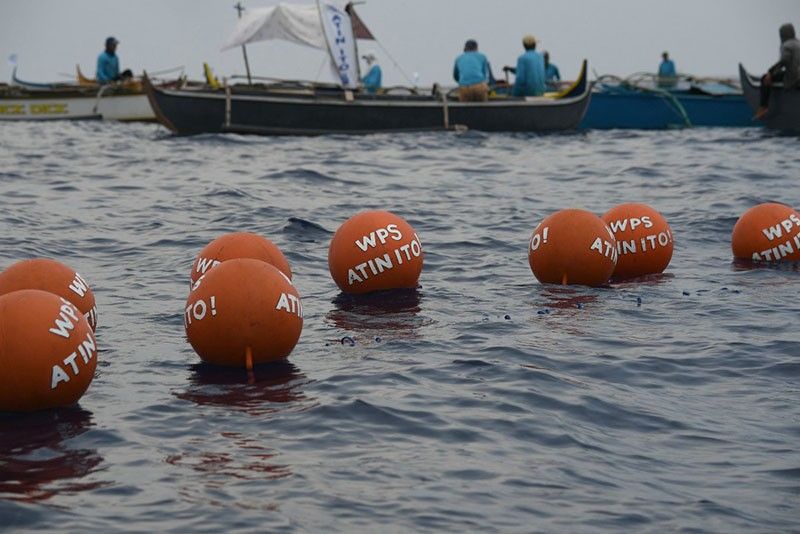
Upgrade to High-Speed Internet for only ₱1499/month!
Enjoy up to 100 Mbps fiber broadband, perfect for browsing, streaming, and gaming.
Visit Suniway.ph to learn
Cristina Chi - Philstar.com
May 20, 2025 | 1:06pm
MANILA, Philippines — The Philippine Coast Guard is currently tracking two Chinese research vessels presumed to be conducting unauthorized marine scientific research inside the Philippines' exclusive economic zone, PCG Spokesperson Jay Tarriela said on Tuesday, May 20.
The first vessel, Xiang Yang Hong 302, was first detected entering the Union Banks, a group of features in the Spratlys Island within the Philippine EEZ, on Monday, May 19, Tarriela said.
The second vessel, Tan Sou Er Hao, was first monitored entering the Philippine EEZ three days ago.
The Coast Guard has since deployed aircraft to challenge the two vessels by radio, Tarriela said, but the Chinese vessels have not responded to any of the challenges.
Tarriela added that a third Chinese research vessel, Zhong Shan Da Xue, departed from China's Guangdong province on March 31 to conduct marine scientific research in the northern part of the Philippines' exclusive economic zone (EEZ). The vessel remained there for an unspecified period before returning to Guangdong on May 20.
"One thing is clear, they are violating our exclusive economic zone. And their marine scientific research is basically a violation of international law," Tarriela said at a press conference where he shared the PCG's findings. "We never permitted the Chinese government to conduct marine scientific research within our own exclusive economic zone."
As of 8 a.m. Tuesday, the Xiang Yang Hong 302, a 100-meter research vessel operated by China’s State Oceanic Administration, was located 118 nautical miles off the coast of Rizal, Palawan.
It departed from Hainan on May 1 and was tracked by the PCG using Canada’s dark vessel detection technology.
"The capability of this Chinese research vessel is to conduct deep-sea surveying. This is the reason why it is also equipped with remotely operated vehicle and underwater drones," Tarriela said.
The second research vessel, Tan Suo Er Hao, was last detected on Tuesday about 103.5 nautical miles off the coast of Burgos, Ilocos Norte.
Tarriela said it departed from Hainan, China, on May 8 and is operated by the China Ocean Mineral Research and Development Association, with personnel from the Institute of Deep Sea Science and Engineering.
He confirmed that PCG Commandant Admiral Ronnie Gil Gavan has deployed aircraft for the past two days to monitor the vessels' movements.
"The Coast Guard aircraft also challenged these Chinese research vessels. And as what we always expect, they never responded to our radio challenges," Tarriela said.
Under the United Nations Convention on the Law of the Sea, foreign vessels must obtain prior authorization from coastal states before conducting marine scientific research in their exclusive economic zones.
"These Chinese research vessels are always considered to be for dual use. It can be for scientific or civilian. It can also be used for military because of for the use of submarine navigation or seamen," Tarriela said.
While the PCG attempts to drive these vessels out, Tarriela said there are "reports" that the information gathered by the research vessels were being sent to the People's Liberation Army Navy "for whatever reasons that they can make use of those data."
This is not the first time that Chinese research vessels have entered the country's EEZ without permission.
In early May, the PCG tailed the Chinese research vessel Tan Suo 3 after it entered the Philippines' EEZ and recorded its crew retrieving a deep-sea submersible capable of reaching 4,500 meters.
The vessel was also observed recovering an unidentified yellow piece of equipment, possibly related to marine scientific research activities
Such activities are seen by the PCG as a possible security threat as deep-sea mapping of the country's seabed can facilitate submarine deployment.
The Philippine Navy earlier said that China has likely deployed drones to map the country's underwater terrain — data with potential military use for "undersea warfare" — based on forensic evidence from drones recovered in Philippine waters from 2022 to 2024.
China claims almost the entirety of the South China Sea through its so-called "nine-dash line" — a position invalidated by the 2016 ruling of the Permanent Court of Arbitration in The Hague.

 1 month ago
9
1 month ago
9



